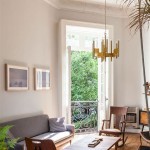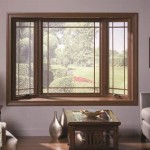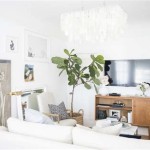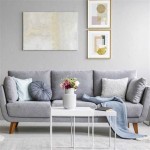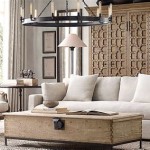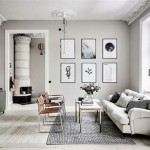Mid-Century Contemporary Living Room Design: A Comprehensive Overview
The mid-century contemporary living room style, a timeless fusion of two distinct design movements, offers a sophisticated and comfortable living space. It gracefully blends the clean lines and functionality of mid-century modern (MCM) with the evolving textures, materials, and technological advancements of contemporary design. Understanding the key elements and how they interact is crucial for creating a truly authentic and livable mid-century contemporary living room.
This design aesthetic emerged as a natural progression from mid-century modern, which peaked in popularity from the 1940s to the 1960s. While MCM emphasized minimalism, organic shapes, and the use of natural materials, it often lacked the diversity and technological integrations that define contemporary design. The mid-century contemporary style retains the core principles of MCM but incorporates a wider range of materials, textures, and updated technology to create a more versatile and personalized space.
The result is a living room that feels both familiar and fresh, paying homage to its design heritage while embracing modern sensibilities. This approach allows for the integration of advanced entertainment systems, energy-efficient lighting, and a broader palette of colors and textures, all while maintaining a sense of clean, uncluttered elegance.
Key Feature 1: Furniture Selection and Placement
Furniture is a cornerstone of the mid-century contemporary living room. The selection and placement of pieces are critical to achieving the desired aesthetic. The emphasis is on functionality and comfort, with a focus on visually appealing designs that complement the overall space.
Sofas typically feature clean lines, low profiles, and slightly angled legs, often upholstered in durable fabrics like tweed, linen, or leather. Leather sofas, in particular, are a popular choice for their durability and timeless appeal. Color choices often lean towards neutral tones, such as gray, beige, or brown, providing a versatile base that allows for pops of color through accessories.
Chairs should echo the same design principles as the sofa, with a focus on comfort and visual appeal. Iconic mid-century chairs, such as the Eames lounge chair or the Wegner Wishbone chair, can be integrated seamlessly into the design. Accent chairs in bold colors or patterns can add visual interest and personality to the room.
Coffee tables are typically made of wood, glass, or a combination of both. Simple, geometric shapes are preferred, such as rectangular or round tables with clean lines. End tables should complement the coffee table in terms of material and design, providing convenient surfaces for lamps, books, and drinks.
Strategic furniture placement is essential for creating a functional and inviting living room. The sofa is typically the focal point of the room, anchored by a rug and facing a fireplace, entertainment center, or large window. Chairs should be arranged to encourage conversation, and tables should be placed within easy reach of seating areas. Avoid overcrowding the space with too much furniture, allowing for ample circulation and a sense of openness.
Moreover, consider the scale of the furniture in relation to the size of the room. Oversized pieces can overwhelm a small space, while undersized pieces can get lost in a larger room. Carefully measure the dimensions of the room and the furniture before making any purchases to ensure a cohesive and balanced design.
Key Feature 2: Color Palette and Material Choices
The color palette and material choices play a significant role in defining the overall atmosphere of a mid-century contemporary living room. While mid-century modern design often featured bold, saturated colors, the contemporary iteration tends to favor a more subdued and sophisticated palette.
Neutral colors, such as white, gray, beige, and brown, form the foundation of the design. These colors create a calming and versatile backdrop that allows for the incorporation of accent colors through artwork, accessories, and textiles. Pops of color can be introduced through pillows, throws, rugs, and wall decor, adding visual interest and personality to the space.
Popular accent colors include muted shades of blue, green, yellow, and orange. These colors evoke a sense of warmth and optimism, while remaining grounded and sophisticated. Avoid overly bright or neon colors, which can detract from the overall aesthetic.
Material choices are equally important in achieving the desired look and feel. Natural materials, such as wood, leather, wool, and cotton, are frequently used in mid-century contemporary design. These materials add warmth, texture, and a sense of authenticity to the space.
Wood is used extensively for furniture, flooring, and architectural details. Common wood species include walnut, teak, and oak, which are prized for their rich color and grain patterns. Leather is a popular choice for sofas and chairs, adding a touch of luxury and durability. Wool and cotton are used for rugs, pillows, and throws, providing softness and comfort.
In addition to natural materials, contemporary elements can be incorporated through the use of glass, metal, and concrete. Glass is often used for coffee tables, lighting fixtures, and decorative objects, adding a touch of lightness and transparency. Metal accents, such as brass, copper, and stainless steel, can be used for hardware, lighting, and decorative accessories. Concrete can be used for flooring, walls, or countertops, adding a modern and industrial touch.
Mixing and matching different materials and textures is key to creating a visually interesting and layered space. For example, pairing a leather sofa with a wool rug, a wood coffee table, and glass accents can create a harmonious and balanced design.
Key Feature 3: Lighting and Accessories
Lighting and accessories are the final touches that complete a mid-century contemporary living room. They play a crucial role in setting the mood, highlighting architectural features, and adding personality to the space.
Lighting should be both functional and decorative, providing ample illumination while also enhancing the overall aesthetic. A combination of ambient, task, and accent lighting is typically used to create a balanced and versatile lighting scheme.
Ambient lighting provides overall illumination for the room, typically achieved through recessed lighting, chandeliers, or pendant lights. Task lighting provides focused illumination for specific activities, such as reading or working, typically achieved through table lamps, floor lamps, or sconces. Accent lighting highlights architectural features or decorative objects, typically achieved through track lighting, spotlights, or picture lights.
Mid-century modern lighting fixtures are characterized by their clean lines, geometric shapes, and use of materials such as metal, glass, and wood. Iconic examples include the Sputnik chandelier, the Arco floor lamp, and the George Nelson bubble lamps. Contemporary lighting fixtures can be incorporated to add a modern touch, such as LED strip lighting, smart lighting systems, or sculptural pendant lights.
Accessories are essential for adding personality and visual interest to the living room. Artwork, plants, rugs, pillows, and throws can be used to create a cohesive and inviting space.
Artwork should complement the overall color palette and design aesthetic. Abstract paintings, geometric prints, and vintage posters are popular choices for a mid-century contemporary living room. Plants add a touch of nature and freshness to the space, and can be used to soften the hard lines of the furniture. Rugs define the seating area and add warmth and texture to the floor. Pillows and throws add comfort and visual interest to the sofa and chairs.
When selecting accessories, it is important to choose items that are both functional and aesthetically pleasing. Avoid cluttering the space with too many accessories, as this can detract from the overall sense of clean and uncluttered elegance. Instead, focus on selecting a few carefully chosen items that reflect your personal style and enhance the overall design of the living room.
Integrating technology seamlessly into the living room is another key consideration. Concealing wires and cables, incorporating smart home devices, and choosing entertainment systems that blend in with the overall design can help to maintain a clean and uncluttered aesthetic. Flat-screen televisions can be mounted on the wall or concealed within custom cabinetry, while sound systems can be integrated into the walls or ceiling. Smart home devices, such as smart speakers and lighting controls, can be incorporated to provide convenience and energy efficiency.
By carefully considering furniture selection, color palette, material choices, lighting, and accessories, one can create a mid-century contemporary living room that is both stylish and functional, paying homage to its design heritage while embracing modern sensibilities. The result is a living space that is both timeless and contemporary, providing a comfortable and inviting environment for relaxation and entertainment.

45 Irresistibly Stylish Midcentury Modern Living Room Idea

Mid Century Modern Living Room Margarita Bravo

380 Best Mid Century Modern Living Room Design Ideas Designs

45 Irresistibly Stylish Midcentury Modern Living Room Idea

My Contemporary Living Room Makeover Tour Before After Happy Home Clinic
:max_bytes(150000):strip_icc()/104copy-c1c707264c284747af92be72b2fe616f.jpg?strip=all)
48 Midcentury Modern Living Room Ideas

25 Best Mid Century Modern Living Room Ideas For Timeless Style Olivia Wendel

Top 100 Mid Century Modern Interior Design Ideas Tips To Create Timeless Decor Styles

45 Chic Midcentury Modern Living Room Ideas For 2025

25 Cozy Mid Century Modern Living Room Ideas

